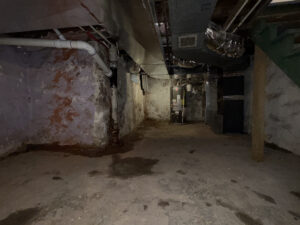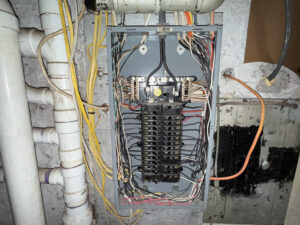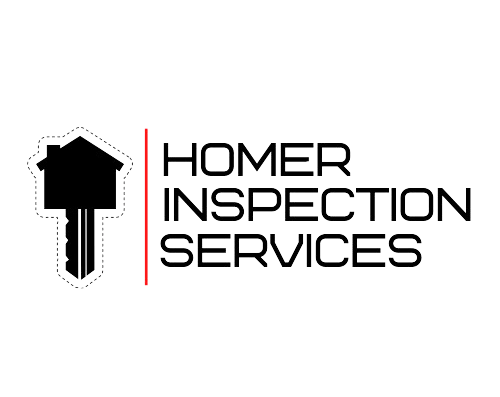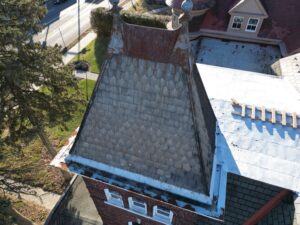A Comprehensive Guide for PA, DE & MD Real Estate Professionals
In the dynamic and often fast-paced world of real estate, a realtor’s expertise extends far beyond market analysis and negotiation. While a thorough home inspection is an indispensable component of any transaction, a preliminary understanding of a property’s “big ticket” items – the roof, foundation, and electrical systems – can significantly empower real estate professionals. This knowledge equips realtors to set realistic expectations for their clients, anticipate potential challenges, and streamline the negotiation process. This comprehensive guide will delve into these critical components, providing realtors with the essential insights to spot potential issues early, contributing to smoother transactions and more satisfied clients.
The Imperative of Preliminary Assessment for Realtors
Real estate agents are often the first, and sometimes the only, professional to walk through a property with a client before a formal offer is even considered. During these initial showings, subtle cues from the roof, foundation, and electrical system can whisper volumes about the property’s overall health and potential future costs. While it is unequivocally the role of a licensed home inspector to conduct a detailed, non-invasive examination, a realtor’s foundational understanding serves several crucial purposes:
- Setting Realistic Expectations: Identifying obvious issues early allows realtors to proactively discuss potential repair costs or complexities with buyers, preventing sticker shock later in the process.
- Strategic Negotiation: Awareness of significant deficiencies can inform initial offer strategies, potentially saving clients substantial sums.
- Client Confidence and Trust: Demonstrating knowledge of these critical systems builds trust and positions the realtor as a highly informed and proactive advocate.
- Mitigating Surprises: Reducing the likelihood of major, unforeseen issues derailing a transaction after an inspection report is delivered.
- Safety Awareness: Recognizing immediate hazards, particularly electrical issues, can ensure the safety of both the realtor and their clients during showings.
This guide is not intended to replace the expertise of a certified home inspector but rather to enhance a realtor’s observational skills, transforming them into a more astute and value-adding partner in the real estate journey.
I. The Roof: Your Home’s First Line of Defense

The roof is arguably the most critical protective barrier a home possesses, safeguarding its occupants and interior from the elements. Its condition directly impacts the longevity of the entire structure. For realtors, a quick but informed assessment of the roof can reveal significant insights into the property’s immediate and long-term viability.
What to Look For: Visible Indicators of Roof Health
While a detailed roof inspection requires specialized tools and expertise, realtors can look for several key visual cues from the ground or during attic access (if safely possible):
-
Shingle Condition (Asphalt Shingles):
- Curling or Cupping: Shingles that curl upwards at the edges or cup in the middle indicate advanced aging and loss of granular surfacing, reducing their effectiveness and signaling the end of their lifespan. This often occurs due to thermal cycling and moisture absorption.
- Cracking or Blistering: Longitudinal or transversal cracks, as well as small bubbles (blisters), suggest material degradation. Blistering often indicates trapped moisture or volatile materials within the shingle.
- Missing Granules: Excessive granular loss, evident as bare spots or accumulations in gutters, exposes the asphalt to direct UV radiation, accelerating degradation. This is a primary indicator of reduced shingle life.
- Missing Shingles: Obvious gaps where shingles have been detached by wind or other forces represent direct points of water intrusion.
- Algae or Moss Growth: While often cosmetic, heavy moss can trap moisture against the shingles, leading to decay and premature wear, particularly in shaded or damp areas. Algae (dark streaks) is usually cosmetic but can indicate moisture retention.
- Loose or Exposed Nails: Nails that have backed out (“nail pops”) can puncture shingles and create pathways for water.
-
Other Roofing Materials (Tiles, Metal, Wood Shake):
- Tiles: Look for cracked, broken, or missing tiles. Also, check for shifting tiles, which can expose the underlayment.
- Metal Roofs: Inspect for significant rust, loose fasteners, punctures, or signs of improper previous repairs. Ensure seams are tight.
- Wood Shake/Shingle: Look for excessive splitting, curling, rot, or missing shakes.
-
Flashing:
- Damaged or Missing Flashing: Flashing, typically metal, is installed around chimneys, skylights, vents, and valleys to direct water away from vulnerable areas. Any signs of buckling, rust, dislodgement, or sealant failure around these critical junctures are major red flags for leaks.
- Improper Installation: Visibly poorly installed or inadequate flashing is a common source of water intrusion.
-
Gutters and Downspouts:
- Overflowing or Clogged Gutters: While not directly part of the roof, overflowing gutters indicate blockages, which can cause water to back up under shingles, leading to fascia and soffit rot, or direct water flow around the foundation.
- Proper Drainage: Ensure downspouts direct water away from the foundation, ideally at least 6 feet, to prevent foundation issues. Signs of erosion directly below downspouts are a warning sign.
-
Soffit and Fascia:
- Rot or Water Stains: Discoloration, peeling paint, or visible deterioration on the soffit (underside of eaves) and fascia (trim board along the roof edge) are strong indicators of prolonged moisture exposure, often from roof leaks or overflowing gutters.
-
Attic Examination (if accessible and safe):
- Water Stains or Mold: Evidence of water intrusion on the underside of the roof deck, insulation, or rafters is a definitive sign of an active or past leak. Look for dark discoloration or fuzzy growth.
- Daylight: Any visible light penetrating the roof deck indicates a hole or significant gap.
- Proper Ventilation: Adequate attic ventilation (soffit and ridge vents, or gable vents) is crucial for preventing heat and moisture buildup, which can prematurely age roofing materials and lead to condensation issues. A lack of proper ventilation can contribute to ice dams in colder climates.
Why it Matters to Your Client: The Cost Implications
Roof replacement is one of the most expensive home repairs, with costs varying significantly based on material, roof size, and complexity. A full asphalt shingle replacement can range from $7,000 to $25,000 or more, while tile or metal roofs can easily exceed $30,000 to $60,000+. For a buyer, inheriting a roof at the end of its life can be a significant unbudgeted expense shortly after purchase. For a seller, proactively addressing roof issues or accurately disclosing its condition can prevent last-minute deal renegotiations or cancellations.
Reputable Source:
- National Roofing Contractors Association (NRCA): https://www.nrca.net/ (for general information on roofing standards and materials)
- For cost estimations, local roofing contractors’ websites or resources like HomeAdvisor/Angi are often cited, but actual costs are highly regional and project-specific. For a more academic perspective on roofing failures, engineering journals or building science resources might be referenced.
II. The Foundation: The Bedrock of Structural Integrity

The foundation is the most fundamental component of a home, providing structural support and stability. Issues with the foundation can cascade into problems throughout the entire structure, impacting walls, floors, doors, windows, and even the roof. Unlike many other components, foundation repairs are typically among the most complex and expensive.
What to Look For: Visible Indicators of Foundation Issues
Identifying foundation problems requires careful observation, both inside and outside the property:
-
Exterior Examination:
- Cracks in the Foundation Walls (Visible from Exterior):
- Hairline cracks: Often cosmetic and common in concrete, but should be monitored.
- Horizontal cracks: Highly concerning and often indicate significant structural stress, potentially from hydrostatic pressure or expansive soils. These are usually indicative of a major structural issue.
- Stair-step cracks: Jagged cracks following mortar lines in brick or block foundations often point to differential settlement or lateral movement. These warrant further investigation.
- Vertical cracks: Can be less serious than horizontal, often due to drying shrinkage, but larger or widening vertical cracks still indicate movement.
- Bowing or Bulging Walls: Foundation walls that visibly lean inward or outward are a serious structural defect, often caused by external pressure from soil or water.
- Settlement: Uneven settling can cause the foundation to sink in certain areas. Look for a visible slope in the ground around the foundation or the house appearing to lean.
- Efflorescence: White, powdery mineral deposits on concrete or masonry are a sign of moisture intrusion through the foundation walls. While not a structural issue itself, it indicates chronic dampness which can lead to other problems.
- Poor Drainage Around the Foundation: Water pooling near the foundation or a negative slope (terrain slopes towards the house) directs water to the foundation, increasing hydrostatic pressure and the likelihood of moisture intrusion or structural movement. Downspouts discharging too close to the foundation are also a concern.
- Exterior Grading: The ground around the house should ideally slope away from the foundation at a rate of 6 inches over the first 10 feet to ensure proper drainage.
- Cracks in the Foundation Walls (Visible from Exterior):
-
Interior Examination (Basement/Crawl Space/Slab Interior):
- Cracks in Interior Foundation Walls: Similar to exterior cracks, pay close attention to the type and size of cracks.
- Water Stains or Pooling Water: Any evidence of moisture, past or present, on basement floors, walls, or in crawl spaces. This can indicate leaks, high water tables, or poor drainage.
- Musty Odors or Mold: Strong musty smells or visible mold growth are strong indicators of moisture issues, often originating from foundation leaks or poor ventilation in crawl spaces.
- Sump Pump Condition: If present, ensure the sump pump appears operational and is properly discharging water away from the foundation.
- Structural Supports: In basements or crawl spaces, examine support columns, beams, and joists for signs of sagging, rot, insect damage, or modifications that look unprofessional or unengineered.
- Foundation Movement Indicators in Living Spaces:
- Cracks in Drywall or Plaster: Especially horizontal or stair-step cracks, particularly around door and window frames. These often indicate stress from foundation movement.
- Sticky Doors and Windows: Doors or windows that are difficult to open or close, or that don’t latch properly, can be a symptom of a racking frame due to uneven settlement.
- Uneven or Sloping Floors: Floors that visibly sag, slope, or feel “bouncy” can point to foundation issues, subfloor problems, or compromised joists. A small ball rolling on the floor can indicate a significant slope.
- Separation of Materials: Look for gaps where walls meet ceilings or floors, or where brick veneer has pulled away from the main structure.
Why it Matters to Your Client: The Cost Implications
Foundation repairs are notoriously expensive and disruptive. Minor crack sealing might be a few hundred dollars, but serious structural repairs, such as underpinning, pier installation, or major concrete work, can range from $10,000 to well over $100,000, depending on the severity and extent of the damage. These costs can be a significant deal-breaker if not identified and negotiated appropriately.
Reputable Source:
- Foundation Repair Association: https://www.foundationrepairassociation.com/ (for general information on foundation issues and repair methods).
- For more technical insights on concrete and structural engineering, sources like the American Society of Civil Engineers (ASCE) or the American Concrete Institute (ACI) would be appropriate.
III. Electrical System: The Heart of the Modern Home

The electrical system is the lifeline of a modern home, powering everything from lights and appliances to HVAC systems. Unlike many other components, electrical issues pose immediate safety hazards, including fire and electrocution. For realtors, recognizing potential electrical problems is not just about cost but also about client safety.
What to Look For: Visible Indicators of Electrical Issues
While most electrical components are hidden behind walls, realtors can observe several telling signs:
-
The Electrical Service Panel (Breaker Box/Fuse Box):
- Rust or Corrosion: On the panel box or breakers, indicating past or present moisture intrusion, which is extremely dangerous.
- Burning Smells: A distinct acrid or plastic burning smell emanating from the panel is an urgent red flag.
- Charring or Discoloration: Any signs of charring, melting, or discoloration on breakers or wiring within the panel indicate overheating and serious issues.
- Over-fusing or Over-sized Breakers: If the main breaker is rated significantly higher than the service entrance cable, or if individual circuit breakers are too large for their wire gauge, it creates a fire hazard. (This often requires an inspector to verify wire gauge, but signs of new, disproportionately large breakers can be a hint.)
- Missing Knockouts or Cover Plates: Openings in the panel can expose live wires and lead to electrocution.
- Aluminum Wiring (Pre-1970s Homes): While not inherently dangerous if installed correctly and maintained, older “solid conductor” aluminum branch circuit wiring (used in homes built roughly between 1965 and 1975) is known to have expansion/contraction issues that can lead to loose connections, overheating, and fire. Look for “AL” stamps on wiring at outlets or the panel. This often requires professional assessment and remediation.
- Knob and Tube Wiring (Pre-1940s Homes): An older wiring method characterized by porcelain knobs supporting single conductors. While functional, it lacks a ground wire, is easily damaged, and often has degraded insulation. It is generally not recommended in modern homes and can be a significant insurance hurdle. Look for ceramic knobs and tubes, especially in unfinished basements or attics.
- Federal Pacific Electric (FPE) Stab-Lok® Panels: These panels, particularly those from the 1960s-1980s, have a documented history of breakers failing to trip under overcurrent conditions, leading to fire hazards. Identifying these panels (often labeled “Federal Pacific Electric” or “FPE” with a “Stab-Lok” logo) is a major red flag for professional assessment.
- Zinsco Electrical Panels: Similar to FPE, Zinsco panels (and their Sylvania and Challenger variations) have known design flaws that can lead to overheating and fire. Look for Zinsco branding.
-
Outlets and Switches:
- Warm or Hot Outlets/Switches: Indicates excessive current or loose connections.
- Scorching or Discoloration: Around outlets or switch plates.
- Loose Outlets/Switches: Can lead to arcing.
- Lack of GFCI Outlets: In wet areas like bathrooms, kitchens, laundry rooms, garages, and outdoors, GFCI (Ground Fault Circuit Interrupter) outlets are critical safety devices to prevent electrocution. Their absence in these areas is a code violation in newer homes and a safety concern in older ones.
- Lack of AFCI Outlets (Newer Homes): AFCI (Arc Fault Circuit Interrupter) protection, required in bedrooms and increasingly other living areas in newer construction, protects against dangerous arc faults.
-
Lighting:
- Flickering Lights (not due to bulb issues): Can indicate loose wiring or circuit issues.
- Dimming Lights When Appliances Turn On: Suggests an overloaded circuit or inadequate service capacity.
-
Visible Wiring:
- Exposed or Damaged Wiring: Any visible wiring that is frayed, cracked, or not properly enclosed in conduit.
- DIY Wiring: Unprofessional-looking wiring, spaghetti junctions of wires, or wires connected with electrical tape instead of proper connectors.
Why it Matters to Your Client: The Cost Implications
Electrical issues range from minor (replacing a faulty outlet for $50-$150) to extremely costly and hazardous. Upgrading an electrical service from 60-amp to 200-amp (common for older homes) can cost $2,000 to $6,000+. Rewiring a house with knob and tube or extensive aluminum wiring can be a project costing $10,000 to $30,000+, depending on the size of the home and accessibility. Replacement of problematic panels like FPE or Zinsco can range from $1,500 to $4,000+. These are not just financial considerations but also immediate safety concerns that can halt a transaction or significantly impact insurance eligibility.
Reputable1 Source:
- National Fire Protection Association (NFPA) – National Electrical Code (NEC): https://www.nfpa.org/codes-and-standards/all-codes-and-standards/list-of-codes-and-standards/detail?codeid=1 (The foundational document for electrical safety and installation standards in the U.S.).
- Electrical Safety Foundation International (ESFI): https://www.esfi.org/ (Provides resources and information on electrical safety in homes and workplaces).
Conclusion: Empowering the Realtor with Observational Acumen
While the intricate details of a home’s roof, foundation, and electrical systems are undeniably the domain of certified home inspectors, a realtor’s preliminary understanding of these “big ticket” items is an invaluable asset. By developing an eye for the visible indicators of potential issues, real estate professionals can:
- Proactively advise clients: Guiding them through potential challenges and helping them make informed decisions.
- Enhance negotiation strategies: Leveraging identified concerns to secure better deals for buyers or prepare sellers for reasonable concessions.
- Build an unparalleled level of trust and confidence: Solidifying their reputation as knowledgeable, thorough, and client-centric advisors.
- Streamline the transaction process: Minimizing unexpected surprises that can delay or derail closings.
- Prioritize client safety: Recognizing immediate hazards and advising appropriate caution.
This comprehensive guide serves as a foundational step for realtors to elevate their observational skills. Remember, your goal is not to diagnose problems or offer solutions, but to identify red flags that warrant immediate professional attention. Partnering with a reputable, thorough home inspection company becomes even more crucial when these preliminary observations reveal potential issues, ensuring your clients receive the most comprehensive and accurate assessment before making one of the most significant investments of their lives. By understanding these critical components, realtors don’t just sell houses; they facilitate informed decisions and build lasting relationships based on expertise and trust.
Choosing the right home inspector can make all the difference in a smooth real estate transaction. A thorough and reliable inspection protects your clients and helps avoid unexpected surprises down the line. For realtors in Pennsylvania, Delaware, and Maryland, I offer comprehensive home inspection services dedicated to providing accurate and detailed assessments. Partner with me to ensure your clients receive the peace of mind they deserve during this important process. Let’s work together to build trust and successful outcomes for every home sale. Visit us at www.homerinspect.com for more information or to book your inspections!



